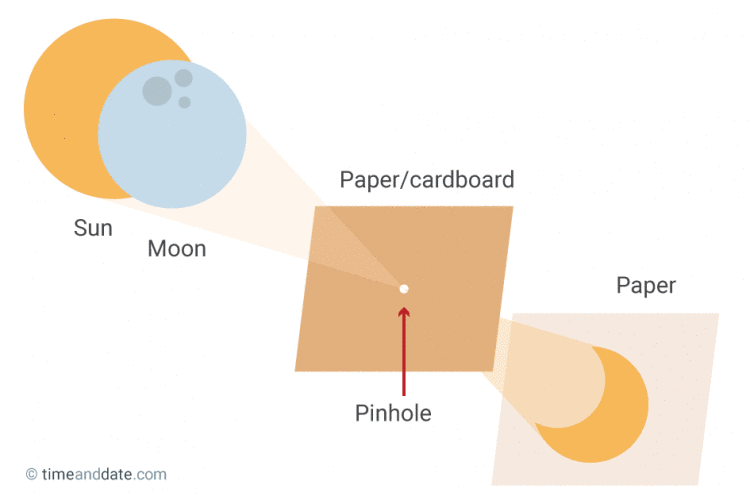| Eclipse times for the 93% eclipse in Central Illinois |
First off, let me debunk a few misconceptions we have been encountering.
- The Sun is not more dangerous on eclipse day than any other day. If you directly looked at the Sun any day you would hurt your eyes. We only emphasize safety on eclipse day because so many people have a reason to look up.
- You do not need to wear eclipse shades just to be outside. The Sun will not hurt your eyes unless you look directly at it. If you are going about your normal day, you shouldn't be wearing eclipse shades, because you can't see anything and will trip and get hurt! Only wear those shades when you are directly looking at the Sun.
- You do not need eye protect for your pets. They don't look at the Sun any other day, so won't on eclipse day. If they regularly looked at the Sun, they would already be blind. Don't worry, they will be safe, because they have no reason to directly look at the Sun.
- Do not be tempted to use plain sunglasses or even two pairs of sunglasses. They will not be strong enough to protect you from the Sun's bright light
- Even though 93% seems like almost total, it will not get very dark in Peoria or any place with a partial eclipse. You have to use a safe viewing method the whole time.
How can you observe the Sun?
The easiest way to indirectly observe the Sun is with a pinhole projector. With these, you do not look at the Sun, but at a projection of the Sun onto the ground, the side of a building, or onto a sheet or piece of light colored paper.
 |
| Image Credit: Peoria Riverfront Museum |
This can be especially fun to do with kids. Have them draw a simple picture on the paper. Then use a pushpin to poke a bunch of holes in the paper in the lines of the picture. You will see that picture in eclipsed Suns. Or make a design of your name or initials. You can even use a hole punch to make bigger holes, and then experiment with how far away you need to have the paper from the surface it is projecting onto to get a clear image. There are examples of these "fancy" pinhole projectors in this blog post from the Planetary Society.
Here is a video on how to use a pinhole projector:
You can also use anything you have around the house with a small hole in it as a pinhole projector. A spaghetti strainer, a Ritz cracker, a cheese grater... anything with a small hole.
You can also indirectly observe the eclipse looking for natural pinholes created by trees and bushes. Look all around you for signs in nature of the eclipse.
You can make these easier to see by putting a white sheet under a tree in your yard.
There are a couple of ways to directly view the Sun as well. If you were able to get eclipse glasses, take a moment to check the manufacturer and make sure they are safe. If you got them from the museum, we purchased them from Rainbow Symphony and American Paper Optics, two very reputable companies. Eclipse glasses have solar filters in them and allow you to directly look at the Sun. Since you won't be staring at the Sun for three solid hours, if you have a friend without glasses, team up and share your glasses! Just don't look at the Sun directly without solar glasses or a filter.
If you don't have eclipse glasses, but do have #14 grade welding glass, you can use that to directly view the Sun. Make sure it is #14 - a lesser grade will not be strong enough to protect your eyes.
Finally, if you have a safe solar filter, you can use it in front of the lens of your telescope or binoculars to observe the eclipse. Do not put on eclipse glasses and then use binoculars without a filter, you will focus the light and melt your glasses.
If you are in Peoria, you can observe through solar telescopes at the Peoria Riverfront Museum's viewing party from 11:45-1:30 on Monday, August 21. You do not need to make reservations for this free event. Lots of info about that event here!
Enjoy watching this rare astronomical event! We are excited to share it will you in Central Illinois at the Dome Planetarium!









Honeywell Econoswitch 7-Day Solar Time Programmable Switch – $31.49 36% OFF
ReplyDeleteThis is nice collection of data
ReplyDelete